General Quarters: U.S. Navy M14 Rifles
October 19th, 2021
5 minute read
“General Quarters, General Quarters. All hands man your battle stations.”
If any naval command sets a crew in motion, it is the call to General Quarters. During the past 50 years, aboard all types of U.S. Navy vessels, the M14 rifle has emerged from weapons lockers to provide close-in defense for the good ship and crew.
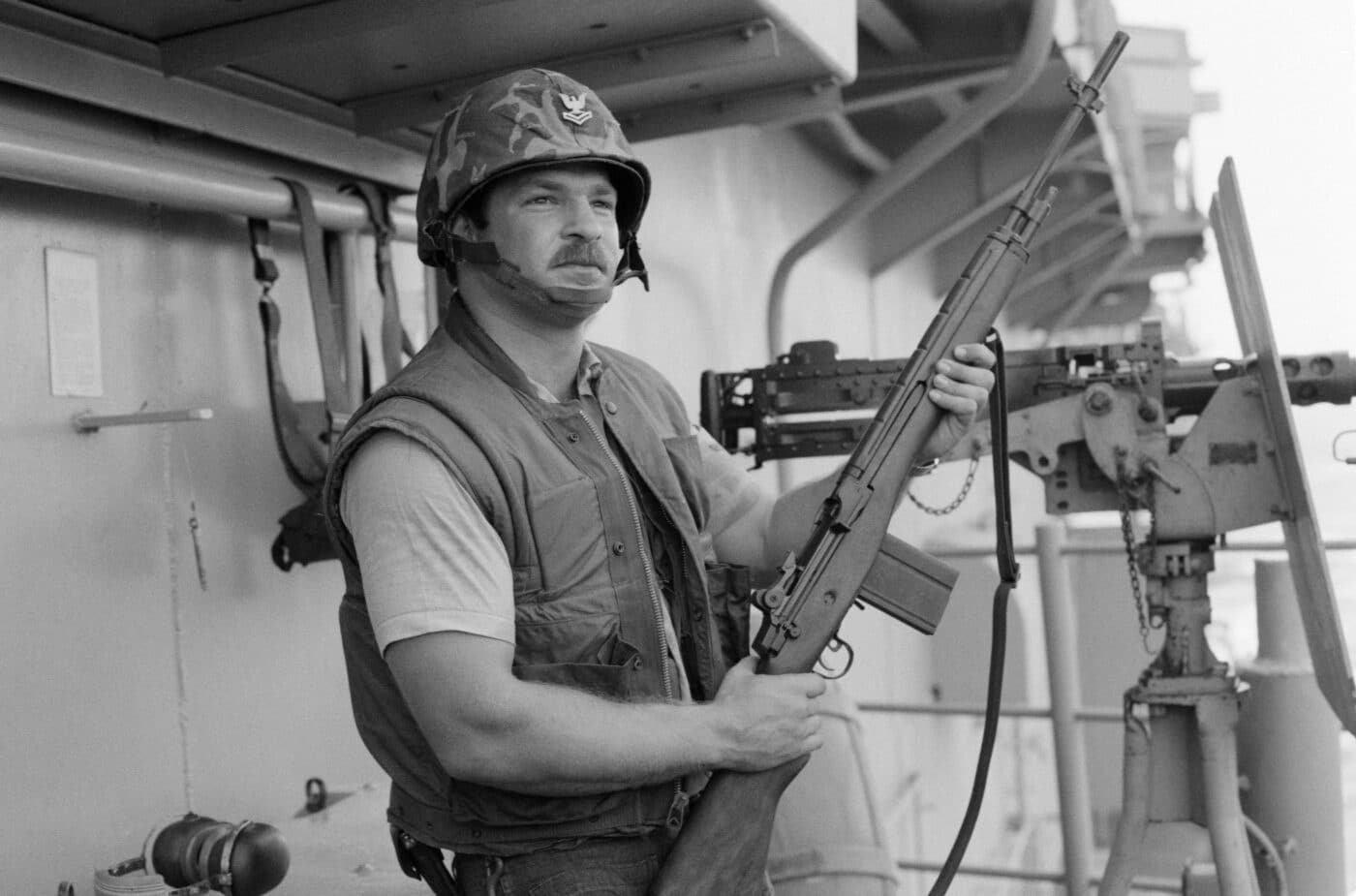
As the M14 was phased out as the standard U.S. Army rifle, and then from USMC service as well, the Navy began to receive the weapon in greater numbers. In 50 years of U.S. Navy service, the M14 performed as a combat rifle for the defense of the ship as well as a specialized line-throwing tool when equipped with the Mk 87 Mod 1 Line-Throwing Kit for use in replenishment (UNREP) operations.
Repelling Attacks
The danger to U.S. Navy ships from small boat attacks, particularly in the Persian Gulf, has grown steadily since the 1980s. Fast-attack craft have grown steadily in both numbers and capability, and they provide a cost-effective means for smaller navies, like Iran, to harass and potentially overwhelm a larger vessel using “swarm attacks”.

These speedboats carry automatic weapons and rocket launchers along with heavily armed boarding parties. Of particular concern is the emergence of drone ships added to the mix in potential swarm attacks.
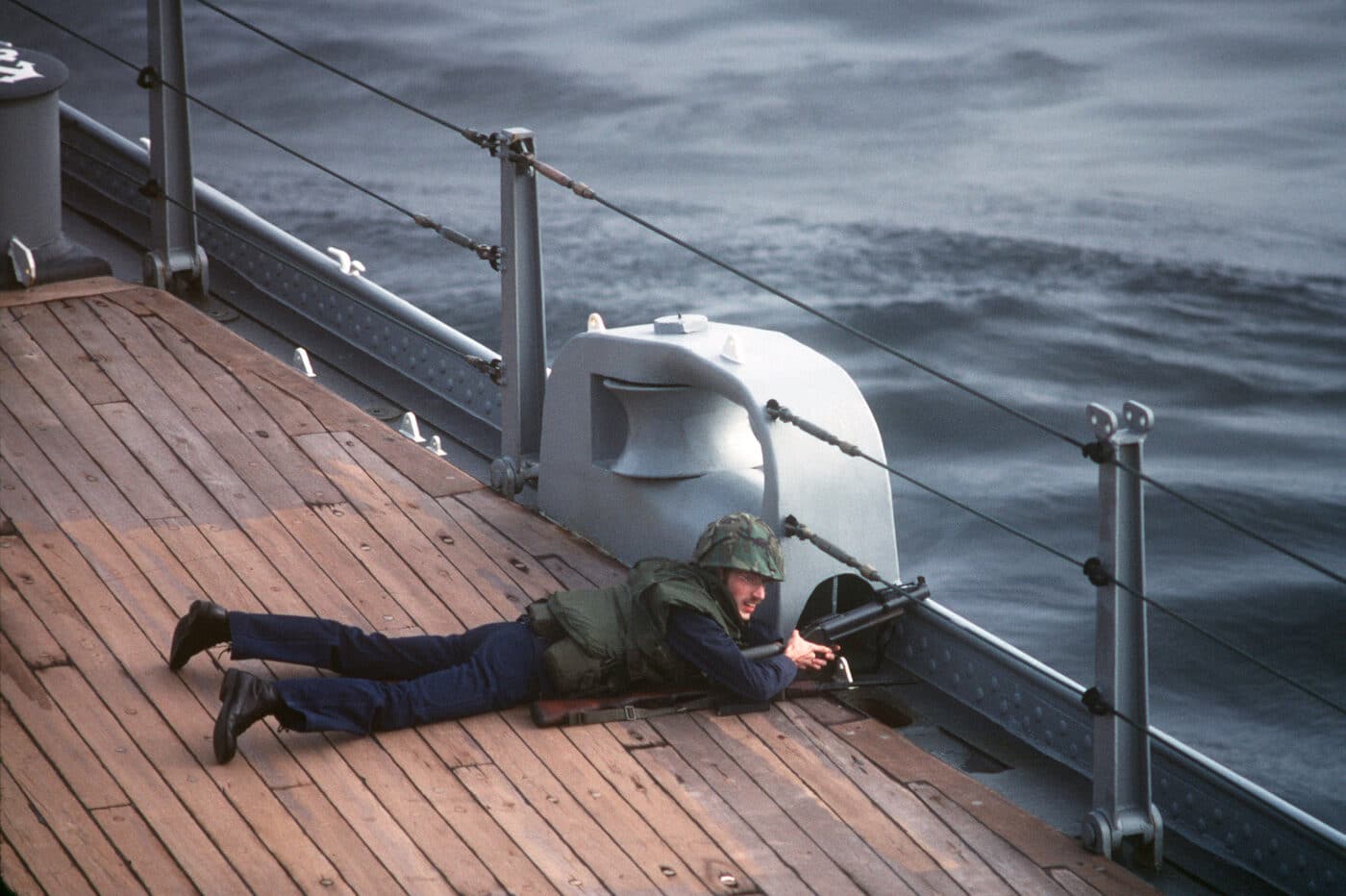
In April 2020, the U.S. Navy’s 5th Fleet Public Affairs Office stated:
The IRGCN vessels repeatedly crossed the bows and sterns of the U.S. vessels at extremely close range and high speeds, including multiple crossings of the Puller with a 50 yard closest point of approach (CPA) and within 10 yards of Maui’s bow.
U.S. Navy 5th Fleet Public Affairs via U.S. Central Command
To combat this emerging threat, the U.S. Navy is developing its Surface Warfare Mission Package (SUW), with an integrated weapons system designed to destroy small craft that attack at speeds of 35 knots or more.
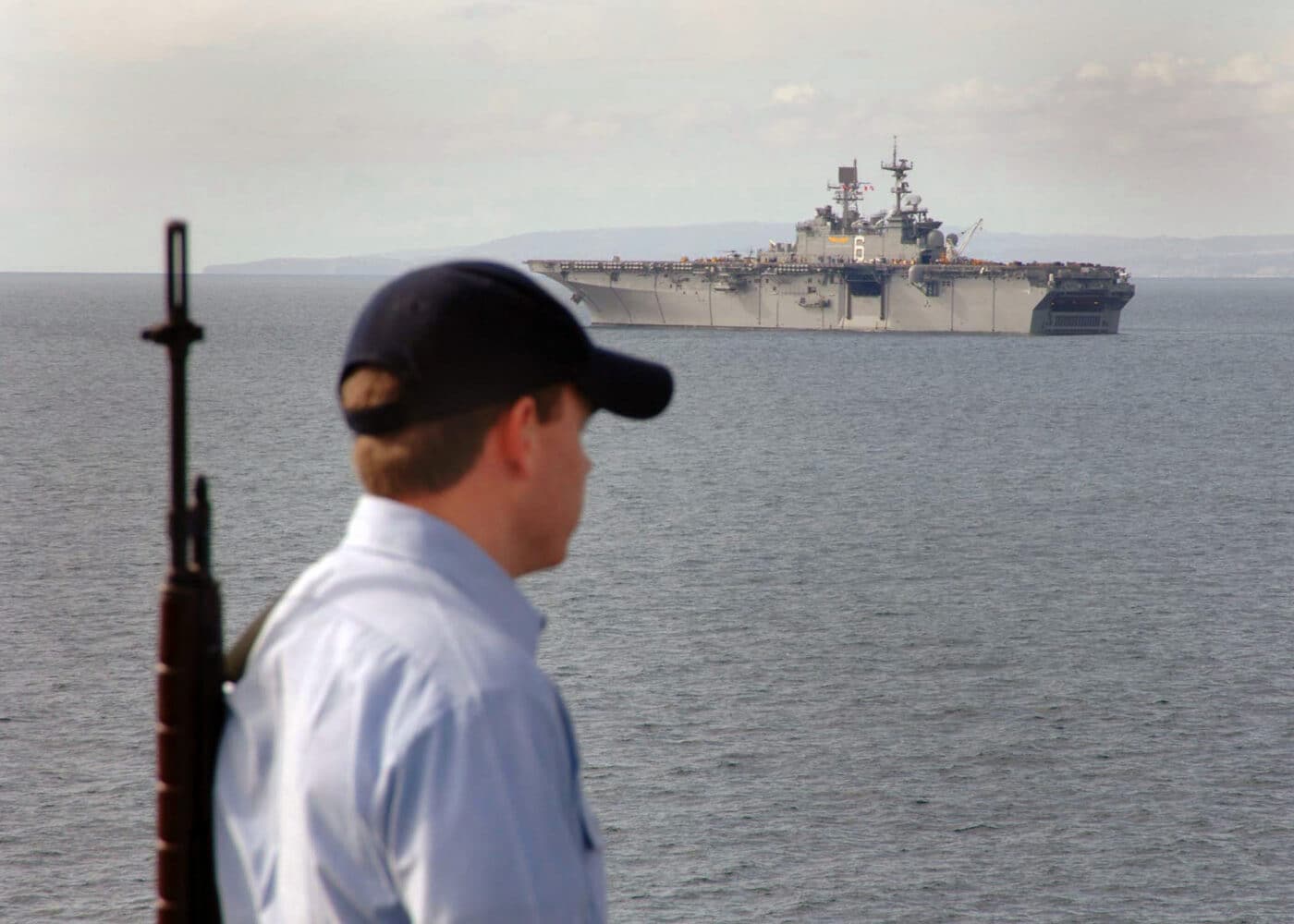
Impressive modern technology aside, the M14 remains in many of the ships’ arsenals. Its combination of 7.62mm punch along with its legendary accuracy continues to provide a strong deterrent to the close approach of fast, small boat attacks.
Serving On
In 2011, reliable estimates placed about 10% of the original production M14 rifles still in service or held within U.S. military stocks. At that time the U.S. Navy had replaced many of their M14 rifles with M16 rifles, but most active vessels maintained a few M14 rifles on board for use as “shot-line” or line-throwing rifles.
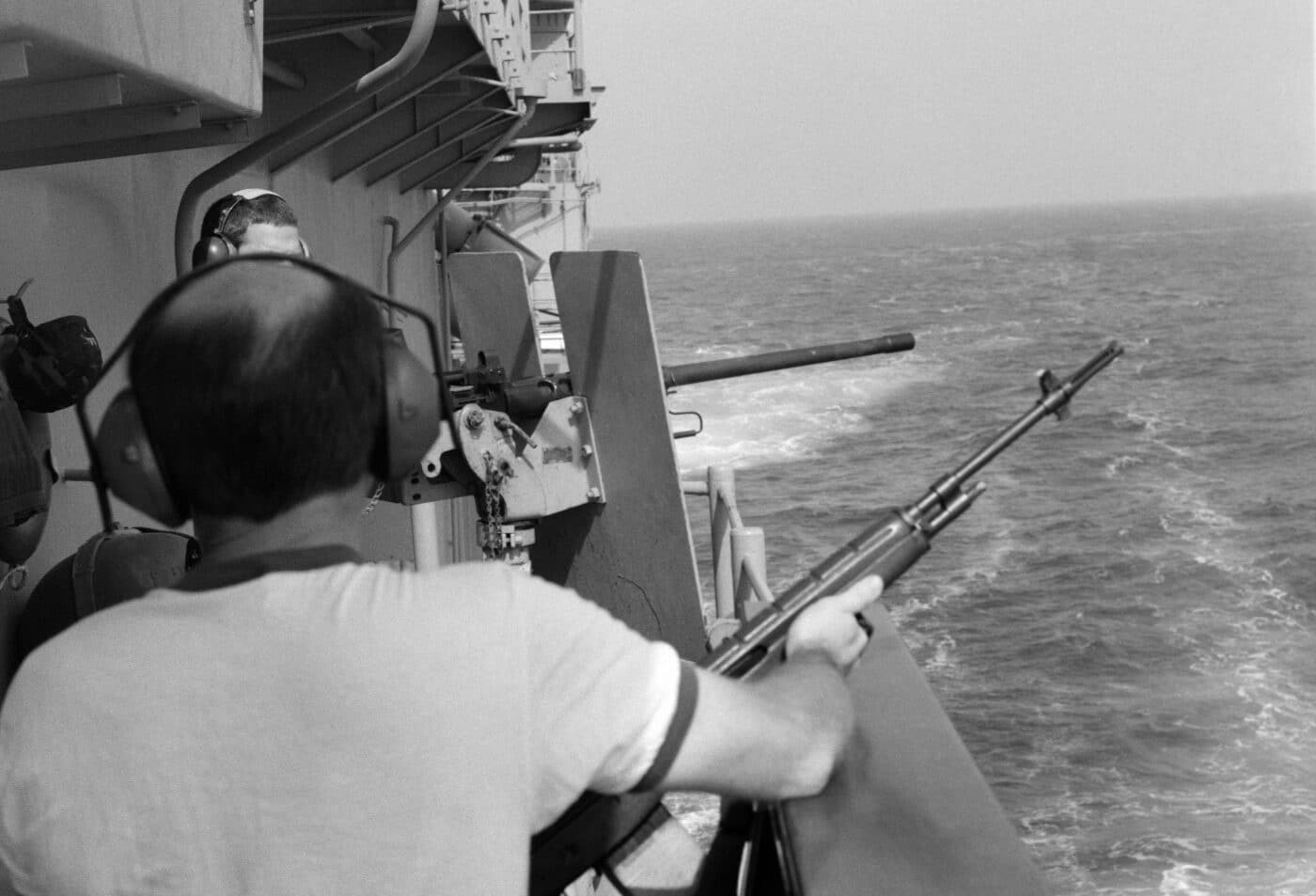
For line-throwing operations, a standard M14 rifle is equipped with the Mk 87 line throwing kit. The Mk 87 is similar to early 20th-century grenade launching cup-style dischargers. The short cylindrical steel tube is approximately 8.5″ long and 2.75″ in diameter (1″ at the connecting end). The Mk 87 slides over the M14’s flash suppressor and is fastened to the rifle by a latch and a wire loop over the bayonet lug. A safety retaining pin fits through the latch and locks the Mk 87 to the M14.
The reusable hard rubber projectile is fitted with a stainless-steel disk in the base, which absorbs the propellant gases and the wadding of the M64 (7.62mm) rifle grenade cartridge. The loop line connects the shot line to the projectile. The whole shot-line connection process is critically important to the U.S. Navy’s “underway replenishment” (UNREP) system, the primary way of transferring fuel, supplies, parts and even personnel, from one ship to another while both are underway.
Still Standing
Pro and con comparisons between the M14 (10.7 lbs. loaded) and the M16 (8.8 lbs. loaded) have been debated since the early 1960s. In service aboard U.S. Navy ships, the extra weight is rarely an issue, while the range, power and accuracy of the M14’s 7.62mm cartridge is greatly valued.
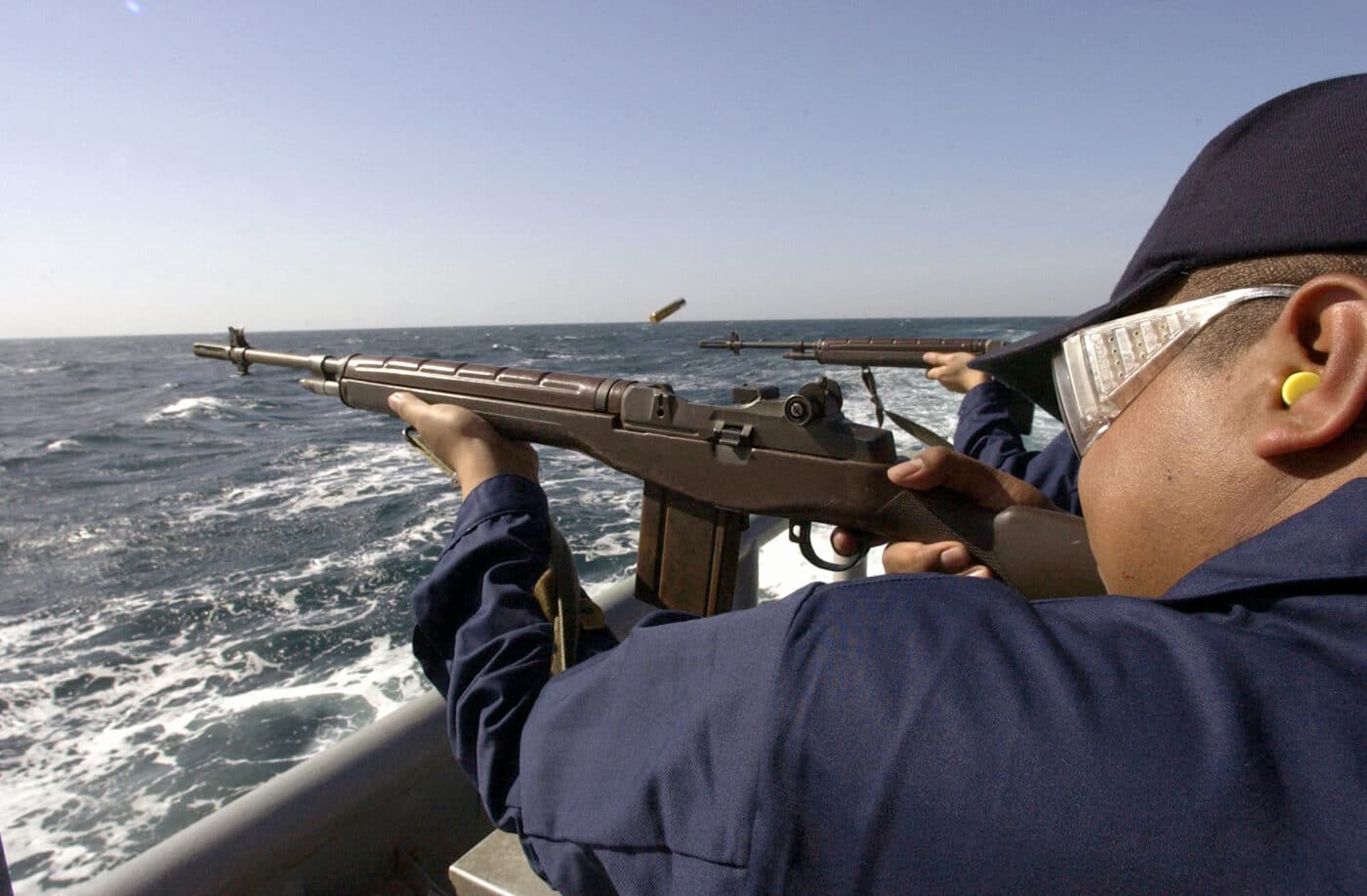
Several young sailors I have spoken to were fascinated by their introduction to the M14’s “real steel” construction. Far from being a legacy weapon from a bygone age, the wise sailor knows that the M14 is still a capable defender of freedom. Just ask the SEALs. The Navy’s Sea, Air, and Land teams have used the M25 sniper rifle (developed from the M14), as well as M14 Mod 0 Enhanced Battle Rifle (EBR) systems. That is quite an endorsement.
On Watch
Even though five decades have passed, the M14 can still be found on U.S. Navy ships. Newer rifles are much more common now, but the M14 still provides the classic advantages of range, accuracy and striking power. Wherever the U.S. Navy sails and whoever the enemy might be, the M14 is still on watch, still serving America.
Editor’s Note: Please be sure to check out The Armory Life Forum, where you can comment about our daily articles, as well as just talk guns and gear. Click the “Go To Forum Thread” link below to jump in and discuss this article and much more!
Join the Discussion
Continue Reading
Did you enjoy this article?

 402
402






